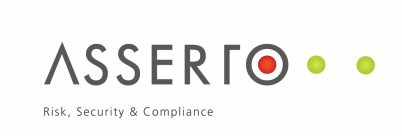After Pablo Escobar the next most famous and rich drug dealer is “El Chapo Guzmán”. He is the Head of the Sinaloa Cartel in Mexico and although he is waiting for his sentence in the U.S. his cartel continues operating in more than 50 countries. He has been charged with transporting more than 155 tons of cocaine to the U.S. His trial has brought to light many things that people suspected, and it has emphasized the most common methods used by cartels to launder money.
The cartel got the cocaine from South America, transported it to Mexico and finally distributed it in the U.S. One of the most common ways to send the drug from Colombia to Cancun, Mexico, was by speedboats, or small boats and even fishing vessels with up to 30 tons of cocaine. They exchanged the drug in international waters, so if they were caught prosecution would be more difficult.
Once in Mexico, the cocaine was sent to warehouses in the capital and from there to the US border. They used gas pipe trucks with a hidden tank inside, in which the drugs were put. This was one of the safest methods: if the authority verified the truck, they could open the pipes, and they would only smell gas.
Of course to do this, they needed to have front companies (either incorporated by them or established companies that they had purchased) and most importantly: lawyers and accountants; known as the “gatekeepers” in anti-money laundering regulations. Some said that to launder money, the cartel also used real estate companies, restaurants, hotels, football teams, international bank accounts, exchange houses and gasoline stations, among many others. It’s estimated that 95 companies were used (based in different parts of the world) and several of them even worked for the Mexican government.
But here there is a main question: if we know how the cartel launders money, why is it still operating? The answer is a mix of reasons but there are four that stand out for facilitating more money laundering: corruption, loopholes in regulation, lack of monitoring and companies failing to properly “know their customer”.
Word has it that in Mexico City alone the cartel paid 300,000 US dollars monthly in briberies to police chiefs, military, prosecutors, diplomats, Interpol and even former presidents. The cartels objective: to know about investigations, police operatives and to be protected. The bribes extended to Ecuador and Colombia giving the Cartel control over borders, highways, airports…everything was done to pass the drugs easily. Lawyers paid the bribes in cash, in US dollars.
The high levels of corruption in several countries also facilitated impunity. If they were caught, they were able to pay to be free again. Bribery bought Mexican police in such a way that they helped El Chapo to escape.
We once read an interview of the Queen of the Pacific (another cartel) and she explained that it is not so easy to launder money but that the key to do it is bribery.
We couldn’t agree more.
The cartel got the cocaine from South America, transported it to Mexico and finally distributed it in the U.S. One of the most common ways to send the drug from Colombia to Cancun, Mexico, was by speedboats, or small boats and even fishing vessels with up to 30 tons of cocaine. They exchanged the drug in international waters, so if they were caught prosecution would be more difficult.
Once in Mexico, the cocaine was sent to warehouses in the capital and from there to the US border. They used gas pipe trucks with a hidden tank inside, in which the drugs were put. This was one of the safest methods: if the authority verified the truck, they could open the pipes, and they would only smell gas.
Of course to do this, they needed to have front companies (either incorporated by them or established companies that they had purchased) and most importantly: lawyers and accountants; known as the “gatekeepers” in anti-money laundering regulations. Some said that to launder money, the cartel also used real estate companies, restaurants, hotels, football teams, international bank accounts, exchange houses and gasoline stations, among many others. It’s estimated that 95 companies were used (based in different parts of the world) and several of them even worked for the Mexican government.
But here there is a main question: if we know how the cartel launders money, why is it still operating? The answer is a mix of reasons but there are four that stand out for facilitating more money laundering: corruption, loopholes in regulation, lack of monitoring and companies failing to properly “know their customer”.
Word has it that in Mexico City alone the cartel paid 300,000 US dollars monthly in briberies to police chiefs, military, prosecutors, diplomats, Interpol and even former presidents. The cartels objective: to know about investigations, police operatives and to be protected. The bribes extended to Ecuador and Colombia giving the Cartel control over borders, highways, airports…everything was done to pass the drugs easily. Lawyers paid the bribes in cash, in US dollars.
The high levels of corruption in several countries also facilitated impunity. If they were caught, they were able to pay to be free again. Bribery bought Mexican police in such a way that they helped El Chapo to escape.
We once read an interview of the Queen of the Pacific (another cartel) and she explained that it is not so easy to launder money but that the key to do it is bribery.
We couldn’t agree more.

 RSS Feed
RSS Feed